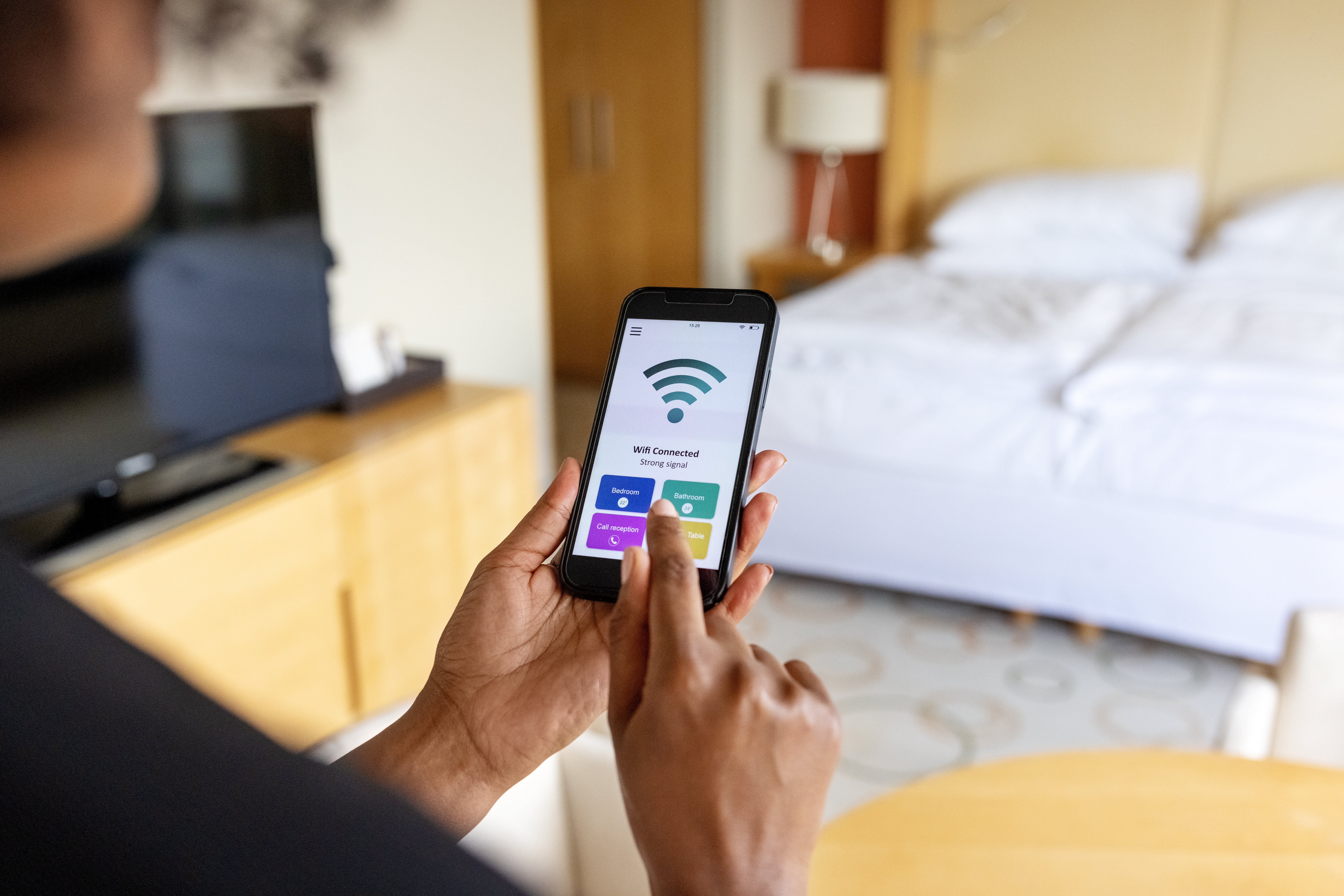What types of broadband are available in the UK?
Don't know your fibre from your 5G? Get up to speed with all the different UK broadband types using our handy guide.

If you take a look through all the latest broadband deals, you'll see a variety of different broadband types being listed, often with lots of different information about their respective download speeds and how they work. Without the right knowledge, this can be confusing.
Whether it's getting muddled up by the uses of 'fibre' and 'Full Fibre' or trying to work out why some tariffs cost more or give you different Mbps figures - it can be a minefield.
Ultimately, you'll always want to pick the option that's right for your needs, so knowing what you're signing up for really helps. This is where our guide can get you up to speed - so to speak - as we've explained all you need to know about the different broadband types that are currently available here in the UK.
Broadband types explained...
Before we get into which broadband type is which, it's important to remember that the availability of each option varies across the country.
This is usually down to the simple fact that a certain broadband network may not have been rolled out in a particular area yet. Unfortunately, it also means that you won't necessarily be able to access all of the options below.
However, on a general level, here in the UK we are blessed by the fact that a multitude of options are available. So, while your property might not get certain ultrafast options right now, you're still likely to have some good speeds available.
Here's what's on offer:
Sign up for breaking news, reviews, opinion, top tech deals, and more.
ADSL broadband
ADSL - or 'Asymmetric Digital Subscriber Line' - is technically widely available, but is the slowest and oldest broadband type you can get.
It's run through a fixed-line network of copper telephone cables that come from your nearest exchange, into your street's cabinet and then across into your property. Due to this, the typical download speeds are on average about 8-10Mbps, as the copper cables can only transmit a limited amount of data. The speed can also be affected by any damage or just wear and tear on the line.
However, these speeds can be slightly higher or slightly lower depending on how old they are and how far away your home is from the exchange - the newer and closer they are, the better.
A benefit to ADSL though is that its slower speeds often mean providers sell them as cheaper broadband deals. That said, the existing ADSL network is currently in the process of being upgraded and the main operator of it, Openreach, is planning on retiring the old copper lines in the coming years.
So, although it is widely available, most providers will now place you on their faster fibre connections and only tend to offer ADSL to remote locations that have yet to get access to faster broadband speeds.
Fibre (or FTTC) broadband
Fibre - or 'fibre-to-the-cabinet' - is the most popular and widely used broadband type in the UK right now. It's much faster than ADSL and gives a selection of speeds to choose from that can range from 30Mbps up to 70+Mbps.
It's faster, because rather than running from the broadband exchange to the street cabinet along the older, copper cables, the fibre network uses fibre-optic cables. The rest of the connection runs from the cabinet to your property - hence the name 'fibre-to-the cabinet' and why some providers refer to it as 'part fibre'. This fibre-optic tech is able to send more information through and subsequently deliver these improved speeds.
Openreach currently says that fibre broadband is already available in more than 98 per cent of the UK - as such, if you're currently using ADSL, it might be the case that you're now able to upgrade to a faster fibre broadband deal.
Full Fibre (or FTTP) broadband
'Full Fibre' - also known as 'fibre-to-the-premises' - can give you some of the fastest broadband speeds on the market, as it essentially (and as the longer name suggests) takes the fibre-optic line straight into your home.
The speeds you can get are also huge and range from 100Mbps to over a mighty 1Gbps. This is because fibre-optic cables use light pulses to send information, so the lines are ultrafast because they're sending the data at light speed.
The downside is Full Fibre is often more expensive and it hasn't been rolled out across much of the country just yet. Openreach plans to provide it to 25 million homes and businesses by 2026. At the time of writing, around 62% of residential premises can access Full Fibre connections, while 80% can get ‘gigabit-capable’ speeds (although this also includes cable broadband).

Cable broadband
Cable broadband is a similar broadband type to 'Full Fibre' in that it can deliver speeds from 50Mbps to in excess of 1,000Mbps. However, the way its network operates is slightly different.
If we take the UK's main provider of this broadband type - Virgin Media - we can see that they also use fibre-optic cables from the broadband exchange to the street cabinet, but they then run a different cable from the cabinet into your home.
This particular piece of tech is a 'coaxial cable'. These are capable of transferring large amounts of data at ultrafast speeds, as well as phone and TV services, too. What's more, they are said to be more durable than fibre cables and less likely to suffer issues or connectivity problems.
The big choice of speeds and the reliability of the network is what makes this broadband type very popular. Again though, the faster the speeds, the higher the price. Plus, cable broadband isn't as widely available as fibre - at time time of writing, Virgin’s coverage is around 60% of the UK. That said, Virgin Media has pledged to upgrade its network so that it reaches over 20 million homes by 2026.
Independent broadband providers
Although not strictly a ‘type’ of broadband, it’s important to highlight that there are some providers who offer Full Fibre connections but on their own independent networks. A popular example of this is Hyperoptic, a nationwide provider that can offer a variety of packages with speeds up to 1,000Mbps. A few others that are growing in popularity include: Community Fibre and Gigaclear.
However, a little research will show you that there are in fact hundreds of independent broadband providers, with some specifically offering services on a regional or local level.
Satellite broadband
Satellite broadband is a broadband type that's now available anywhere in the UK.
As you might have guessed, it works via satellite transmission. This essentially beams your broadband connection down to you from orbiting vessels above. As a result, you also need to purchase and install a receiver and dish to use this type of connection.
It was historically quite slow and something that was only really used by properties and businesses in remote areas that had no connection to physical networks. But now - and primarily thanks to new providers like OneWeb and Starlink - it can be used by anyone, anywhere and can even give speeds of up to 500Mbps.
However, what you need to consider with this broadband type is the cost. It's still quite a new technology and it is on the pricey side. Plus, lots of tariffs have data caps. Having said that, this type of technology will be subject to change, upgrades and regulation in the future that could make it more affordable and flexible for customers.
Mobile (or 4G/5G) broadband
4G and 5G broadband are alternatives to fixed line broadband that are becoming increasingly popular. We've explained more about this broadband type in our comprehensive guide to 5G broadband, but it essentially allows you to connect to a provider's 4G or 5G mobile network to power your internet.
The installation is hassle-free too. All you need is a router, which once you've connected it to the mobile network, will start sending out a WiFi signal for your devices to connect to and use.
You can find 4G and 5G broadband tariffs from the likes of Three, Vodafone and - on a limited capacity - Virgin Media.
Some 4G and 5G broadband deals can also be quite cheap when compared to standard fixed broadband, but the downside is you can of course only get these if you have decent mobile coverage in your area. At the time of writing, around 93% of the UK landmass can get 4G, while 5G is now available to around 92%.

Fixed Wireless Access (FWA) broadband
FWA is a type of broadband you can get and it’s similar to 4G and 5G broadband in that it operates wirelessly. The key difference is that it’s transmitted via different types of radio waves - albeit on the same 4G and 5G network - across two fixed points. However, it’s not as widely available as its mobile network counterparts.
Different speed descriptions for different broadband types
Now we've covered the different broadband types, another area it's worth looking at is the terminology some providers use when describing the speeds they offer with their tariffs - as these can also be confusing at times.
- 'Standard' - often used to describe slower ADSL speeds of up to 15Mbps.
- 'Superfast' - refers to fibre connections with speeds between 30Mbps and 70Mbps.
- 'Ultrafast' - most providers associate this term with speeds of 100Mbps and upwards.
- 'Gigafast' - some providers use this to refer to speeds of 1,000Mbps/1Gbps and above.
Which providers offer the fastest broadband speeds?
If you are interested in the faster broadband speeds, you’ll be pleased to know that the majority of the leading providers now have Gigafast speeds available - often as their top packages.
In 2023, EE launched its Full Fibre 1.6Gbps option, establishing itself as the fastest, largely available broadband provider, which at the time saw it over take Virgin Media's Gig1 (1,130Mbps) tariff. However, Virgin has recently launched a 'Gig2' tariff which - as you might expect - gives speeds up to 2,000Mbps, to regain its position as the fastest widely available UK provider.
What extras can you get with different broadband types?
It can be argued that a broadband type can also be classified by the extras and bolt-ons you can get with a package.
In other words, as well as the different connection options and download/upload speeds, you can often encounter different terms used to describe some of the features that come with specific broadband types.
Here's a short selection of some more common ones:
- Contract - refers to the agreement you sign which determines parameters and the length of your deal.
- Data allowance - can be capped or unlimited and determines how much you have to use on your deal.
- Setup fees - a one off cost you might need to pay to have a certain broadband type installed or connected.
- TV bundles - packages which also include TV service.
If you want to learn more about this and see what other extras you can get with modern broadband types, then check out our helpful 'what can a broadband package include?' guide.
What locations may struggle to get access to these broadband types?
As we've alluded to in the above breakdown of the different broadband types, some - such as ADSL - are specifically for areas where there has yet to be a fibre rollout. However, if we look closer at this, we can see that it's not just rural locations, there are some urban areas that can also struggle to access the full selection of services.
Here are the areas where you're likely have some issues:
- High-rise accommodation - residents in taller buildings may face problems with signal strength.
- Listed/historic buildings - these may be unable to have broadband installed (even if in a city) due to preservation and planning regulations.
- Static homes - caravans or mobile homes that can't have permanent fixed-lines won't be able to get such connections.
- Rural/remote areas - will struggle simply because the broadband infrastructure has yet to reach them.

What broadband type do I currently have?
If you’re not sure what broadband you have - this can happen if you’ve been with the same provider a long time - there are a couple of ways you can work this out.
One is to run a broadband speed test as this will show you the download speeds you're getting and you can simply match these to the broadband type we've described above.
The other option is to contact your provider directly and simply get them to run through what your current broadband package is and what (if any) extras it includes.
Will there be any new broadband types available soon?
It's no secret that the types of broadband we have in the UK have changed dramatically over the last decade, and although it's unlikely a new specific broadband type will be available, we might see further changes in terms of performance and accessibility with what we do have right now.
As such, we can speculate that we will see faster broadband being more widely available in the next five years. This is all but confirmed with the promises from the likes of Openreach and Virgin Media to improve their respective Full Fibre/network rollouts.
In addition, upgrades to fibre speeds will mean faster packages will likely be easier to get and we may see a wider choice of tariffs being made available from providers. What's more, this larger, more accessible broadband market may mean packages become cheaper in the long run.
What broadband type can I get?
Hopefully it's now clear to you that in the UK we have plenty of choice when it comes to broadband types. However, the fundamental thing to remember is what you can get in your home or business depends on what's available in your area.
Although, as we've also already mentioned, you might now be in a location where faster connections have now been rolled out without you realising - so there's the potential for you to enjoy an improved broadband package.
We can help you with this with our widget below. Simply enter your postcode into it and we'll show you the best deals in your location. You can then use these to get a better idea of what options you have available.

Rich is a freelance copywriter and content strategist with over 10 years' experience. His career has seen him work in-house and in various agencies, producing online and offline content marketing campaigns and copywriting for clients in the energy industry.